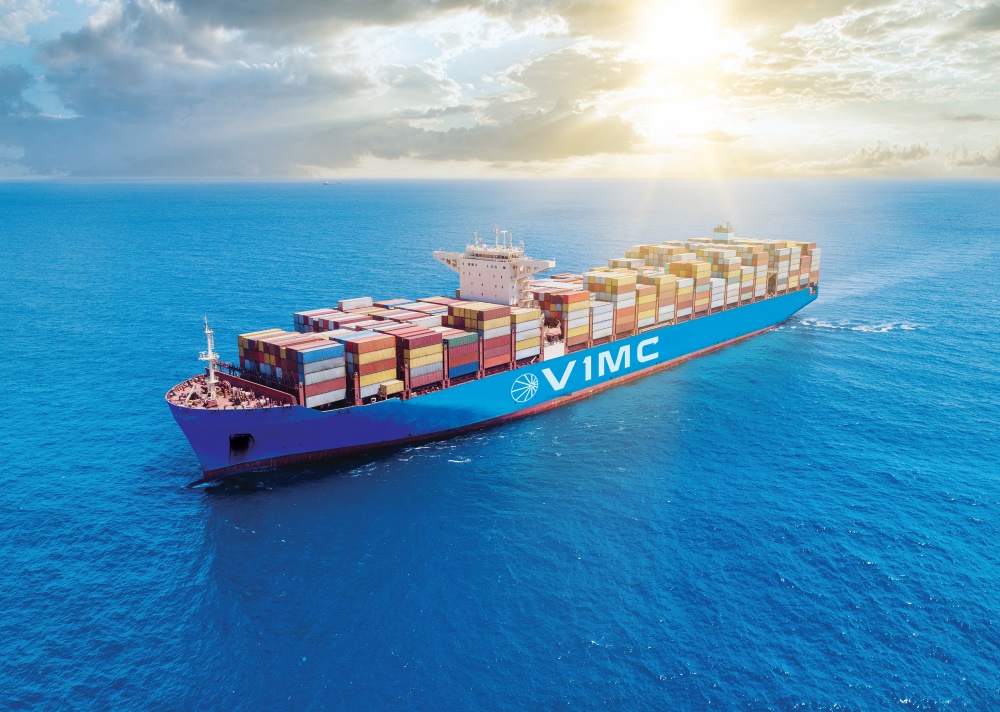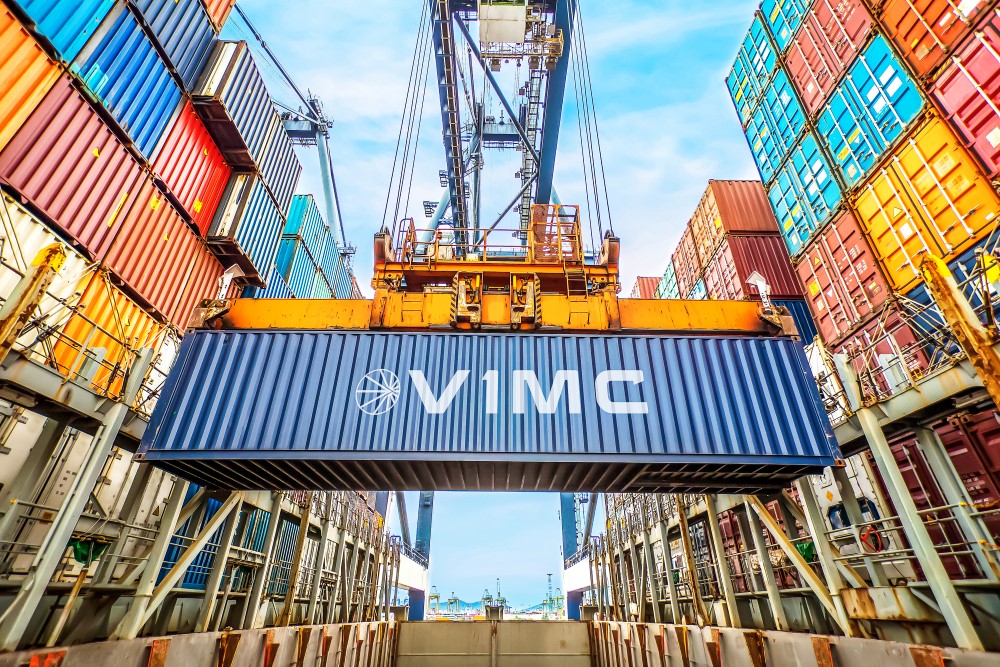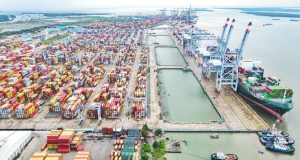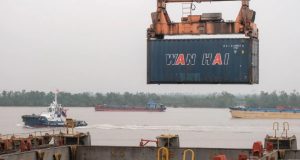The two most important business targets of Vietnam Maritime Corporation (VIMC), revenue and profit, are expected to exceed the set plan for 2022.
While still waiting for the results of the financial statement audit, it is likely that Vietnam Maritime Corporation (VIMC) profit will exceed $130 million for the second year in a row.
In 2022, the corporation’s total shipping volume was estimated at 21.8 million tonnes, reaching 113 per cent of the plan in 2022. Cargo throughput via seaports is estimated at 124 million tonnes, reaching 93 per cent of the plan in 2022; container volume is estimated at 5.8 million TEUs, 97 per cent of the plan.
In 2022, VIMC consolidated revenue was estimated at $653.9 million, 105 per cent of the same period in 2021 and 120 per cent of the plan in 2022. Consolidated profit was estimated at $136 million, 124 per cent of the plan.
VIMC’s total profit in sea shipping is estimated at $81.2 million, 171 per cent of the same period in 2021 and 144 per cent of the plan in 2022.
In 2022, some companies of VIMC in sea shipping have achieved good results in financial restructuring, such as Bisco, and Vitranschart.
With the increasing growth rate of import and export goods volume, developing Vietnam’s international shipping fleet has much potential.
However, about 90 per cent of Vietnamese imports and exports are handled by foreign shipping lines, especially in long-distance sea routes such as Vietnam to the Americas and Vietnam to Europe. The local fleet mainly transports domestic and operates short international routes in Asia.
Vietnamese fleets are at a disadvantage in their competition with foreign shipping firms because Vietnam’s fleets mainly have unreasonable structures and small tonnage. Meanwhile, the global trend is for large tonnage ships to optimise transport costs, especially container and specialised ships.
VIMC manages a fleet of 59 ships, including four oil product tankers (accounting for 5 per cent of VIMC’s total tonnage), 10 container ships (7 per cent of total tonnage), 45 dry cargo ships (88 per cent of total tonnage). Most ships VIMC buys are used or built before 2010, with an average age of 20 years.
“Many shipping companies have suffered losses in recent years due to the impact of the economic slowdown and the recession of the shipping sector. Additionally, obstacles in investment procedures also caused difficulties faced by VIMC in developing the ships fleet, which most of them are old and asynchronous,” said VIMC’s leader.
On the other hand, VIMC’s business in seaports in 2022 continues to be under fierce competitive pressure. The continuous development of new ports has led to oversupply, especially in declining consumer demand. Some new ports such as Lach Huyen international port (HICT), Nghi Son Port, Chan May Port, Chu Lai Port, Vinh Tan Port, Nam Van Phong, Bac Van Phong, Tan Cang – Petro Cam Ranh, Dung Quat Port – Hoa Phat in Central region, Gemalink Port in Ba Ria – Vung Tau, and so on.
Meanwhile, the system of means, equipment, and infrastructure at many ports of VIMC are still limited, with the access channel not dredged on time, which affects competitiveness.
However, VIMC’s business in seaports still basically fulfilled the targets in 2022.
VIMC’s seaport volume in 2022 is estimated at 124 million tonnes, equaling 93 per cent of the plan. The profit of VIMC’s seaport business is estimated at $67.3 million, 93 per cent of the plan.
In 2023, VIMC forecasts that the world economic situation will have many unfavourable fluctuations, significantly affecting the global maritime industry.
Therefore, VIMC set the goals to achieve a shipping volume of about 17.7 million tonnes; a seaport volume of 134.7 million tonnes; consolidated revenue of $580.6 million; and pre-tax profit of $101.3 million in 2023.










